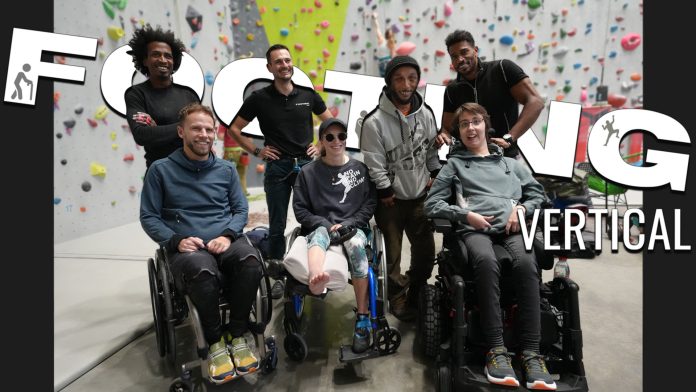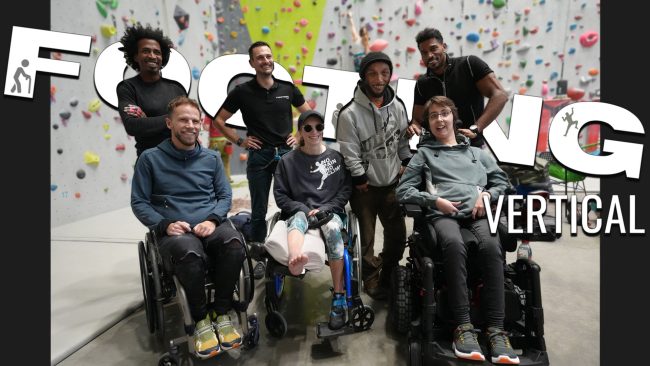
How did the idea of Vertical Footing come about, and what were the key steps in its development?
After such a rewarding career in climbing, we felt the need to share our passion beyond the usual boundaries of the sport. Climbing has given us so much — not only physically, but also mentally and in terms of personal growth. It’s a sport that pushes you to exceed your limits, to be persistent, and to build self-confidence. We wanted to pass on these values to a broader audience, especially to those who, due to various physical or motor limitations, do not have access to this discipline.
The idea of launching an inclusivity project came naturally. We saw how transformative climbing could be, and it seemed essential to us to allow everyone, regardless of their abilities, to experience it. That’s how we imagined and developed “Vertical Footing,” a machine that allows people with difficulties, including those with disabilities, to practice climbing autonomously.
Our goal is simple: to provide access to this sport for everyone. We want anyone to be able to enter a climbing gym and climb with the same freedom as any other climber. We strongly believe that sport, and especially climbing, can be a powerful vehicle for social inclusion, self-improvement, and enjoyment. This is what motivated us to take on this challenge.
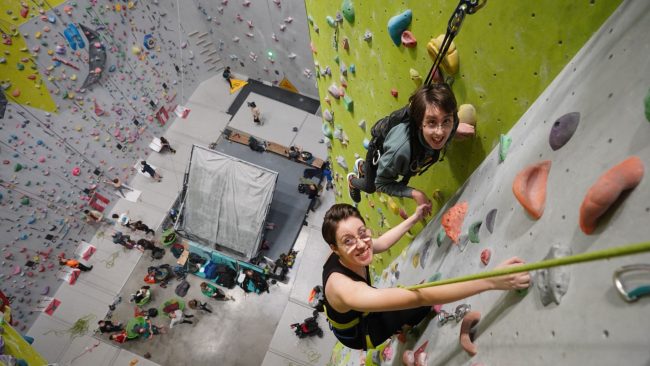
Could you tell us about your collaboration with Sébastien Kuehn and the role he played in bringing this project to life?
Today, Sébastien—our meeting was really important for the development of this project. We are not just business partners, we are friends now.
To launch such an ambitious project, to do something that no one has ever tried before, even the biggest climbing equipment brands to date—it’s a real challenge.
Our meeting was decisive because all three of us combined our skills, with a lot of motivation.
And of course, this is just the beginning. We are ensuring we have additional partners who will manage the commercial side, as well as a medical expert, a doctor who oversees the medical aspect.
What were the biggest challenges you faced in developing Vertical Footing and other products, and how did you overcome them?
Challenges in such a project are inevitable. Just the idea itself was already a big challenge. For us, the biggest factor was time. When we came up with this idea in late 2021, early 2022, we immediately thought of Paris 2024. It’s our last competition, the perfect opportunity to showcase Vertical Footing to the largest audience. Between industrial research to validate a proof of concept, prototype work, developing other connected machines in parallel, and the fact that there were only three of us, it required a massive investment.
Could you explain in detail how the motorized winch of Vertical Footing works and how it enables people with disabilities to climb autonomously?
In Colmar, we offer you the chance to climb with ELSA, our proof of concept. It’s a mechatronic system developed for load balancing that can learn how much weight to remove from a person and follow their movements all the way to the top of the route, eliminating some or all of the physical demands of climbing. Note that while physical assistance is provided, the need for coordination, balance, and the thrill of ascending vertically to nearly 15 meters is not removed! This proof of concept is currently being transformed into CAMI, the world’s first climbing assistance system capable of automatically adapting to the type of climber, their disability or condition, and their progress over time.
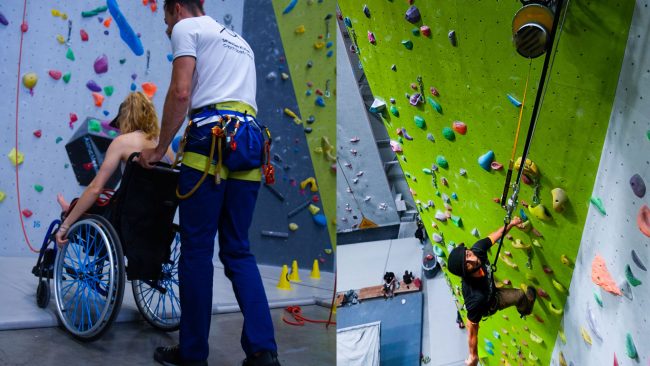
How is the C.H.A.S. harness different from traditional harnesses, and how does it ensure the safety of users?
For CAMI to be used by everyone, we developed the world’s first climbing harness adapted for people with disabilities. It positions the climber optimally, verticalized as if they were standing. Even paraplegics’ knees won’t touch the wall, while protecting their cervical spine, supporting their pelvis and spine if they cannot do so themselves, preventing pressure sores, and can be put on without needing to stand up or raise their legs. This is a unique harness, currently patent-pending (hence no product images), which restores autonomy to those who need it, both in the sports world and in hospitals, reducing the need for caregiver intervention to almost nothing. Our patent is very valuable as we have also patented the first standardized attachment system located on the harness straps—the only way to correctly verticalize a person—thus preventing other harness manufacturers from using this wonderful idea without our approval.
How does the B.A.S.S. controller ensure that climbers who are not secured do not start their ascent without safety?
BASS is a connected device designed to ensure the safety of climbers in climbing gyms. It will help secure the thousands of gym managers already equipped with automatic winches and also contribute to the growth of these products in climbing gym markets. It will be supported by major insurance companies, who will avoid the costs associated with heavy incidents due to falls. If a climber enters a route without attaching themselves, BASS will trigger a sound and visual alarm to alert the climber and those around them. But that’s not all—it’s also capable of measuring the wear level of the winches and predicting when maintenance will be needed, allowing managers to run their climbing gyms more efficiently and profitably.
You mentioned that Vertical Footing will be showcased at the Paris 2024 Paralympic Games. What do you hope to achieve with this presentation?
For us, it’s a great opportunity to present our systems during the Paralympic Games. Our project makes perfect sense, as its primary use is intended for people with disabilities. Additionally, Paralympic climbing will debut at the Los Angeles 2028 Games, which adds even more meaning to showcasing it at this event. It’s also an opportunity to meet political figures to present our project.
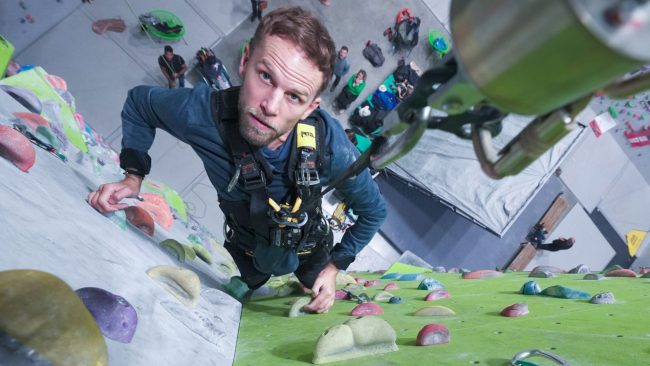
What impact do you hope your products will have on the climbing community, especially for people who had never considered climbing as a possibility for themselves?
Simply put, accessibility! Today, climbing is often seen as an elitist sport. Indeed, it requires a high weight-to-power ratio, a rather lean physique, an injury-free body, and many other physical criteria. However, the benefits of sport, especially climbing, are well recognized. This sport promotes essential values such as perseverance, respect, and self-confidence. That’s why it’s so important for us to make climbing accessible to a wider audience.
We already know that climbing is highly popular. However, the first barrier for many remains the physical aspect. Not everyone is looking to push themselves physically. Some people simply want to find a place where they feel good, a respectful environment where they can develop confidence in themselves and in others. Climbing offers this unique environment, conducive to personal growth.
So why not give them the chance to discover this exceptional sport? Whether for the physical effort or the positive atmosphere and human values it embodies, climbing has a lot to offer to those who try it, whatever their goals may be. Our mission is to break down these barriers and allow everyone to experience this enriching activity.
How do you see the future of inclusive climbing, and what are your long-term goals with MBS Industry?
Our goal is simple: to make climbing accessible to everyone. So, in a few years, I hope that climbing gyms, whether private or public, will have Vertical Footing in their facilities, making it accessible to a wider audience.
MBS Industry will continue to develop high-performance equipment to improve accessibility and safety in climbing, but not only that. Vertical Footing is a sports tool, but we are also working on evolving it into a medical device, as well as using it in the field of work at height.
So yes, MBS Industry is the beginning of a great adventure that, for now, has no expiration date.
Have you already received feedback from potential users or climbing facilities interested in your solutions?
We’ve launched our pre-orders, and yes, some gyms have already committed: (https://www.mbs-industry.fr/map). Additionally, some gyms, like CLIMB UP, have signed a letter of intent. The project is progressing gradually, but we are still in a phase of communication. We hope more gyms will approach us, because beyond the financial returns it can bring, we mainly offer better accessibility for all!
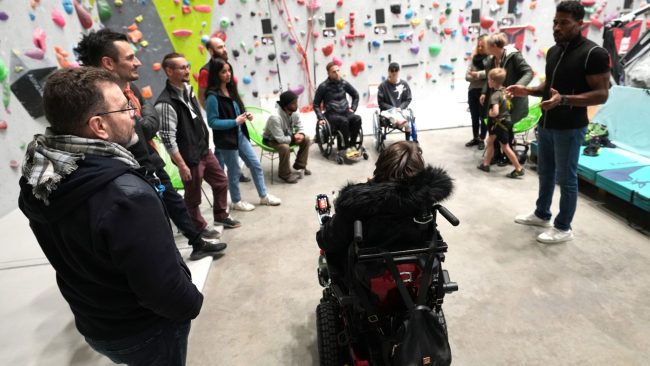
How has your own experience as top-level athletes influenced your approach to developing these solutions?
It’s not really our experience as top-level athletes that has changed everything. Rather, this long career has allowed us to discover the climbing world at an international level and build numerous connections. However, it’s primarily our professional experience that has had a major impact. We’ve been climbing for over 25 years, and for more than 15 years, we’ve been working in this field. We are constantly developing climbing on multiple fronts. My brother has been focusing on the development of climbing through the management of dedicated structures for many years, while I have gained solid experience in the technical and communication aspects.
From the beginning, we wanted to advance this sport, introduce it to a wider audience, and make it increasingly accessible. This remains perfectly consistent with our initial vision.
Do you see your project as a way to redefine what it means to be an athlete in the modern context, with a focus on inclusion and self-improvement?
I believe that people like us, with our experience, have a duty to share as much of this expertise as possible with others.
We’ve gained a lot of experience over the years. So why not pass it on and share it with as many people as possible around us?
What motivates you the most in this new chapter of your career, and what are you looking forward to in the years to come?
We’ve always been hard workers, always dedicating our time to doing something rather than doing nothing.
CBJ press releases are written by the sponsor and do not represent the views of the Climbing Business Journal editorial team.

Want to post a press release here? Click here for more info.
CBJ press releases are written by the sponsor and do not represent the views of the Climbing Business Journal editorial team.




